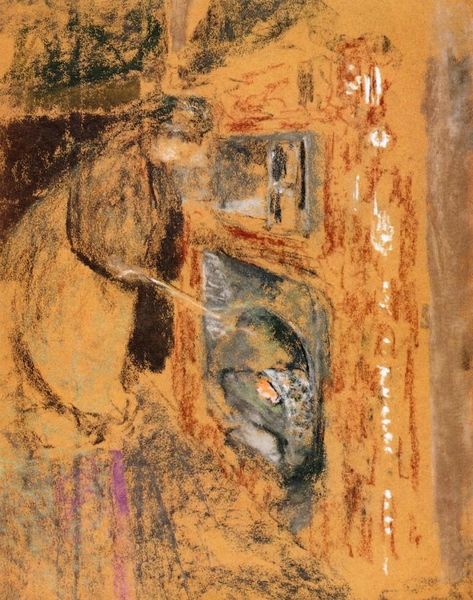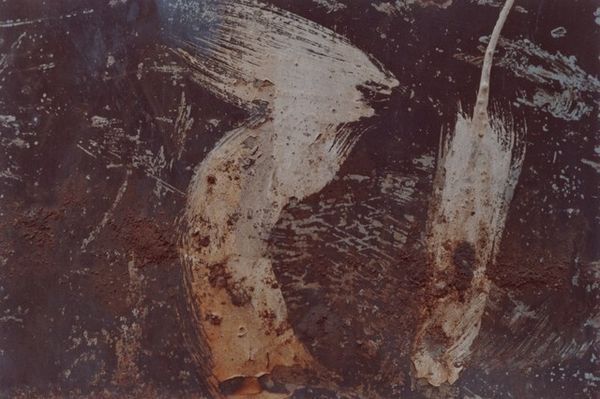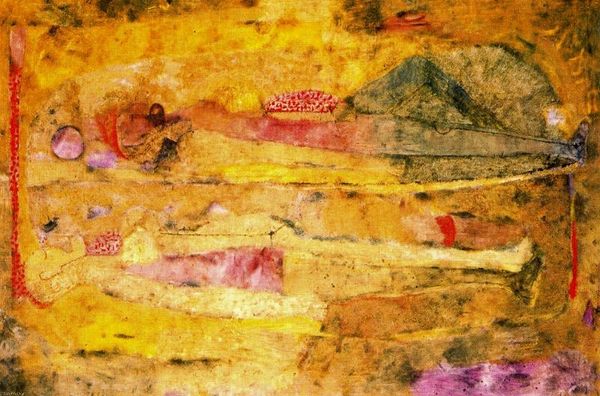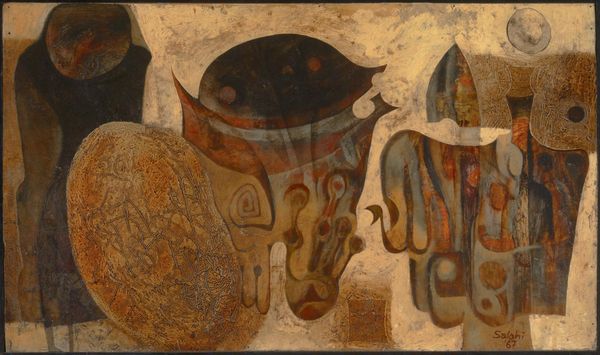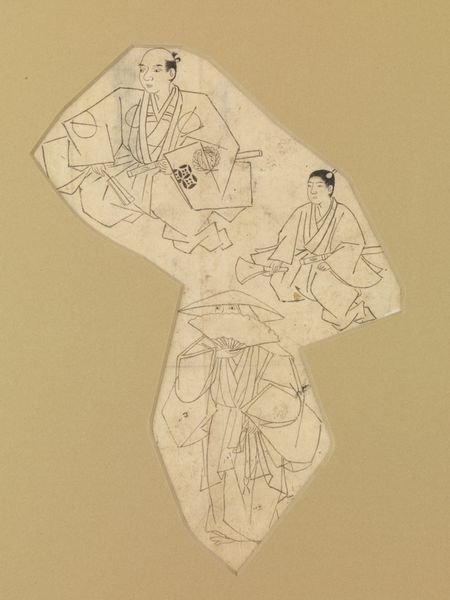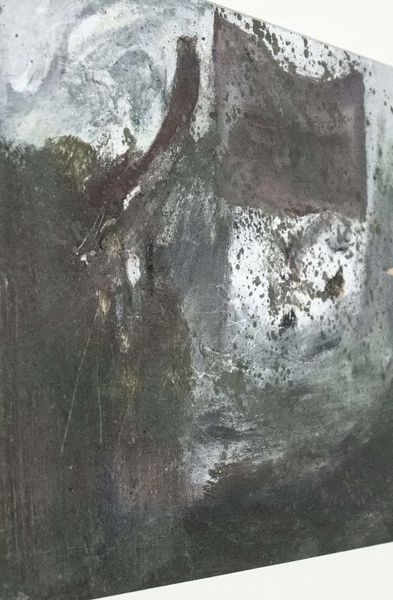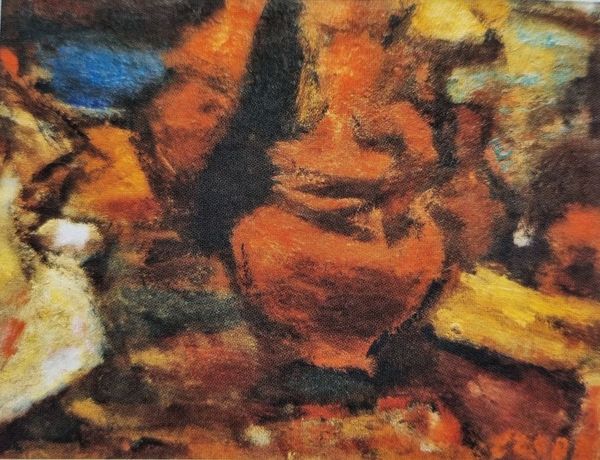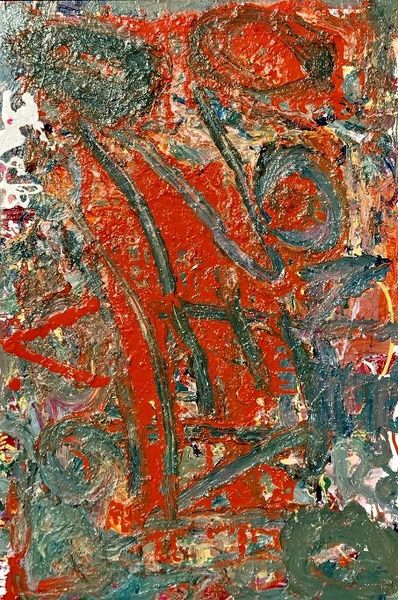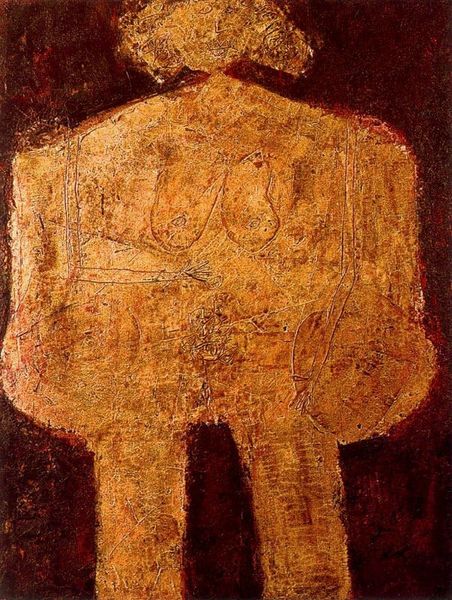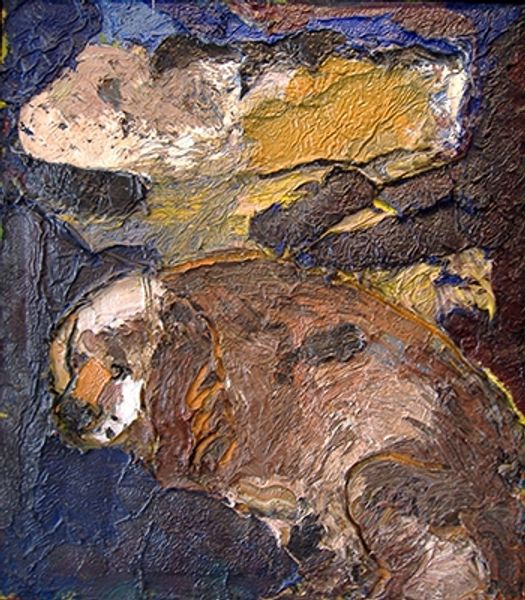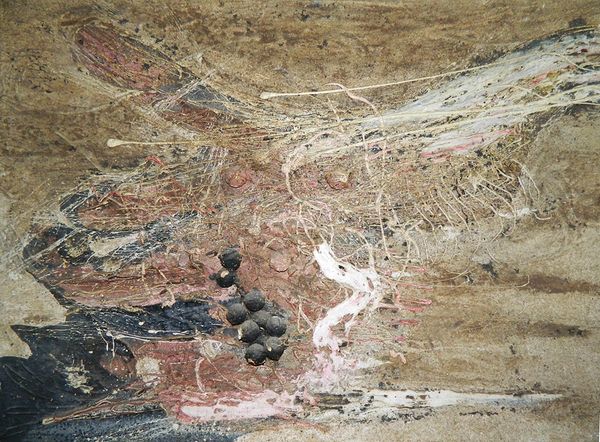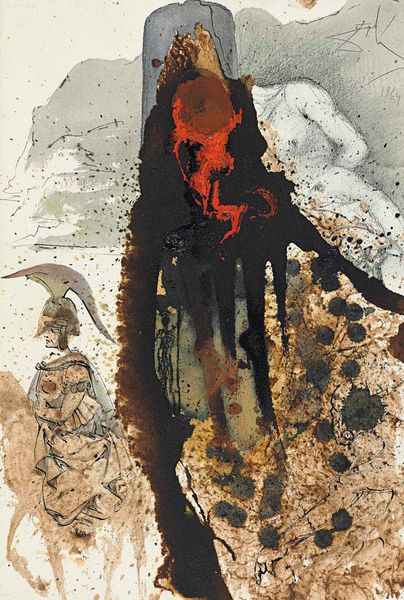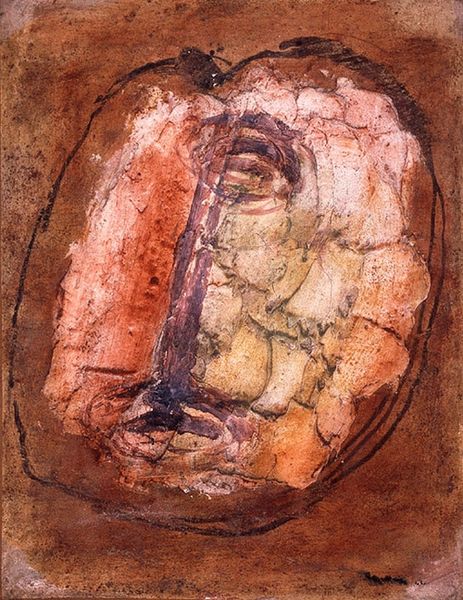
Fragment Showing Perseus with the Head of Medusa Likely from a Metope from the Temple of Apollo at Thermon 630 BC
0:00
0:00
tempera, painting
#
tempera
#
painting
#
sculpture
#
greek-and-roman-art
#
figuration
#
ancient-mediterranean
#
history-painting
Copyright: Public domain
Curator: Here we have a fragment, quite battered really, from around 630 BC. What you're seeing is believed to be a section from a metope that once adorned the Temple of Apollo at Thermon, depicting Perseus with the head of Medusa. Editor: My first impression? It's seen better days, obviously! It feels like witnessing a half-remembered dream, a whisper of a powerful story, fragmented and faded. The earthy colors—the ochres, browns, and blacks—give it this ancient gravitas, but there's a ghostly quality to it. I almost feel like I’m intruding on something sacred. Curator: The fragmentary nature is key, actually. Think about what the myth of Perseus and Medusa represented in the Archaic period—a patriarchal hero's triumph over a powerful female figure. Now consider the socio-political context: the rise of the polis, shifting gender dynamics. The violence inherent in the story mirrors the violence often required to maintain such power structures. Editor: I get that, totally. But look closer, the colors almost bloom out from the center of the composition and they are strangely pleasing. It's brutal, of course, but there's an abstract beauty in the rough outlines and the way the tempera almost bleeds into the stone, whispering of things unsaid, you know? It’s weirdly seductive! Curator: Right, and those blooms hint at earlier phases of the Goddess worship... Even in Perseus’ victory we feel an ancestral connection to an ancient female deity who simply preceded Apollo. The temple itself marking not just a patriarchal rise, but a physical takeover of former sacred grounds. These older mythic associations persist nonetheless. Editor: So, even in his triumphant pose, this Perseus feels kinda haunted. Curator: Precisely! The figure might display dominance, yet the work reminds us that such power is always constructed, always reliant on suppressing other narratives and ways of knowing. Even from the grave—fragmentary like this!—Medusa’s story whispers. Editor: So cool, like the artwork becomes a haunting... Love it! Thanks for that new lens. Curator: My pleasure. It helps reveal art's capacity to preserve uncomfortable histories and persistent contestations for audiences today.
Comments
No comments
Be the first to comment and join the conversation on the ultimate creative platform.
